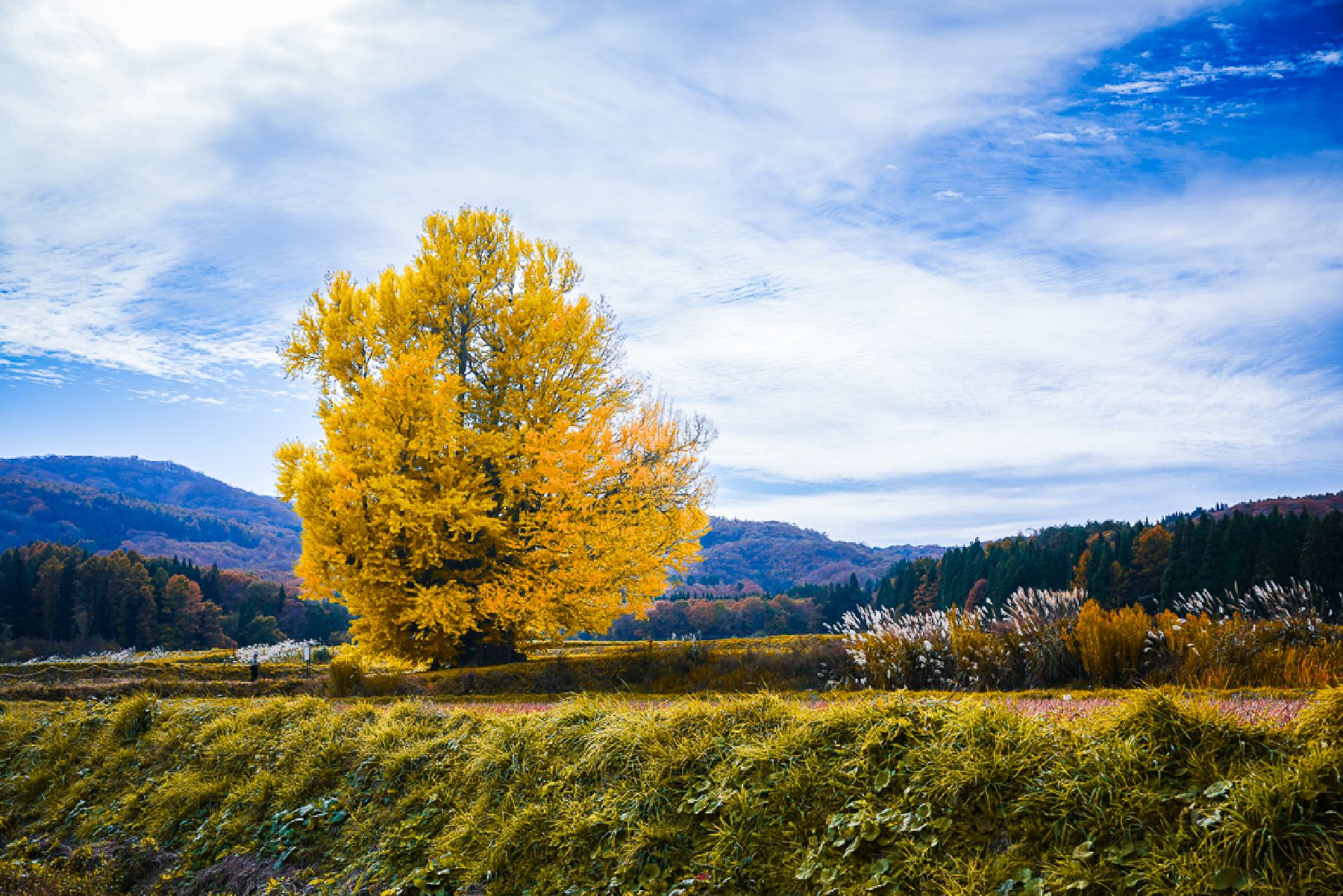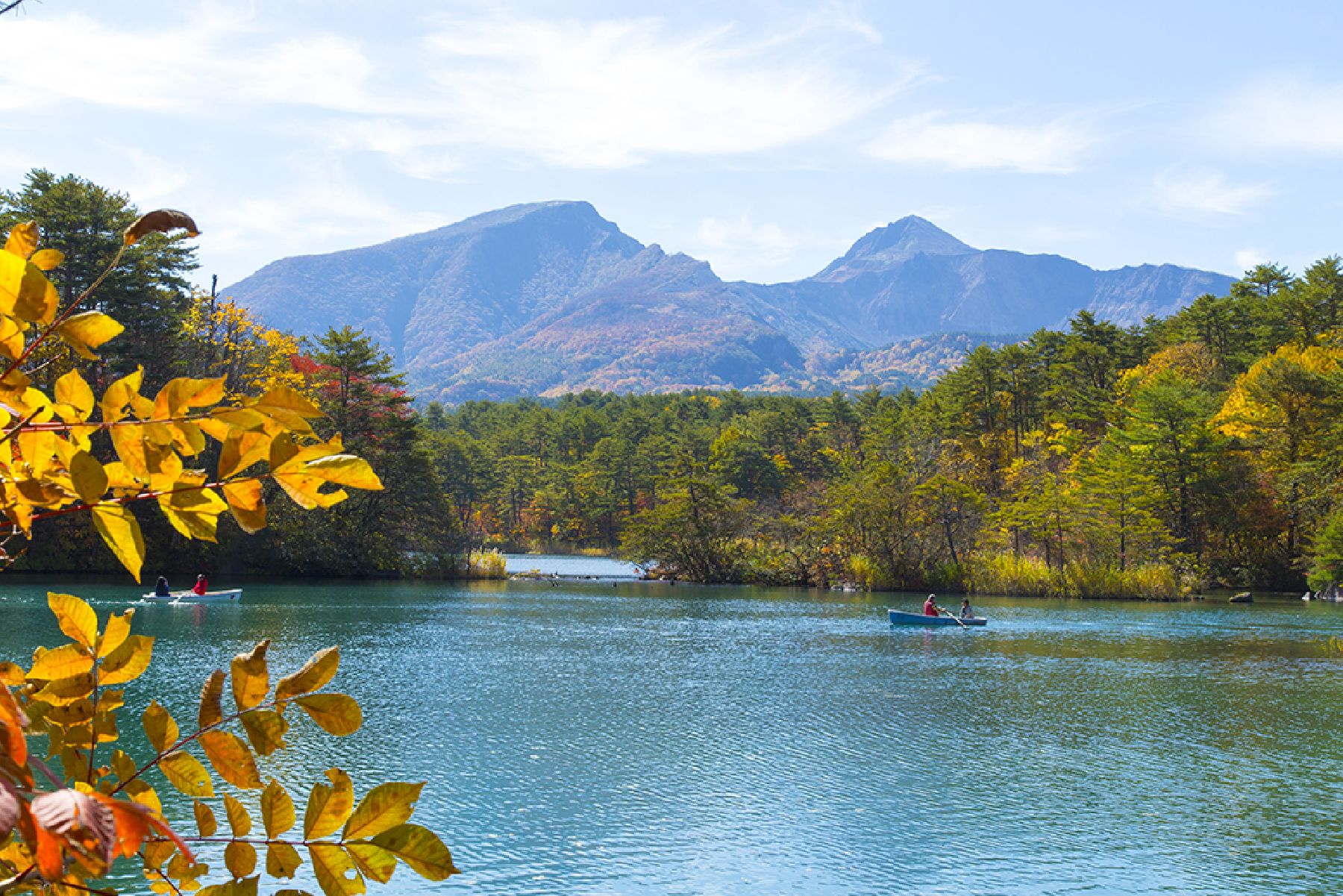
The Great Gingko Tree of Akai
Standing 95 feet tall and nearly 100 feet wide, the Great Gingko Tree of Akai looms above a small neighbourhood to the west of the great lake at Inawashiro. At over 650 years old, this is one of Japan's oldest gingko trees and an iconic symbol of the area for many local people.In particular, the tree is most impressive in autumn, when its changing leaves become a vibrant yellow that can be seen for miles around.The best time to see the great tree is early to mid-November, which is also when the tree is illuminated in the evening. Although there is no official car park, there is plenty of open space in which to park.







